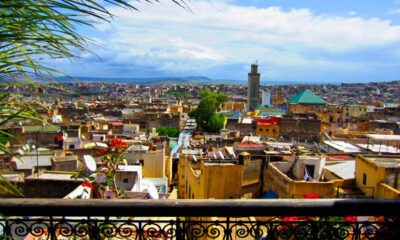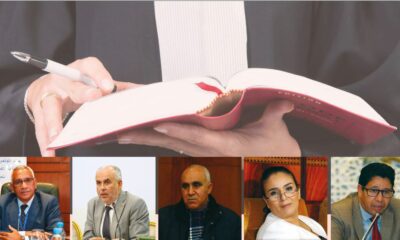Business
These Ten Projects That Will Transform Morocco
In the fields of water, transportation, industry, energy, and urban and industrial development, a series of projects have been launched in recent years. Some have already been completed, while others are ongoing. All of them are set to transform the country.

In the realms of energy, water, transportation, industry, and urban planning, several projects have been initiated over the years that, once completed, will fundamentally alter the landscape of the Kingdom. Some of these projects extend beyond national borders, gaining regional and even international significance.
Let us envision the transformative impact of the Africa Atlantic Gas Pipeline project, which, in its initial phase, will utilize the GTA gas field jointly operated by Mauritania and Senegal to supply the national industry with gas. Later, it will facilitate the transport of Nigerian gas to the European Union.
This initiative promises not only competitively priced clean electricity generated from the newly launched combined cycle plants in Béni Mathar, Tahaddart, and Al Wahda, with a total production capacity of 990 MW, but also abundant energy for the cement, steel, chemical, and petrochemical industries.
The project marks the beginning of a new chapter for Morocco as it joins the ranks of liquefied natural gas (LNG) producing countries. By the end of this year, the first cubic meters from the Tendrara gas field are expected to emerge, with a daily output of over 283,000 m³ and estimated reserves of 10.67 million m³. Two additional production sites, Anchois offshore near Larache and Guercif, are also planned, all connected to a national pipeline network linked to the Africa Atlantic Gas Pipeline.
Beyond its economic implications, and even before its completion, this pipeline symbolizes the affirmation of Morocco’s sovereignty over the Sahara for all participating nations. It further solidifies Morocco’s role as an energy hub, supplying gas to Europe and electricity to Sub-Saharan Africa.
Moreover, renewable electricity is on the horizon. The Noor Midelt project, initiated in 2018, is set to produce enough energy to meet the needs of a population exceeding five million, generating 1,600 MW and becoming the largest solar power plant in the world.
Together with the Ouarzazate facility, over seven million Moroccans will have access to clean electricity. The Kingdom aims to achieve a 52% share of renewable energy in its energy mix well ahead of the 2030 target.
In reality, multiple projects have been launched simultaneously, encompassing solar energy in its two most recognized technologies, wind energy—including a pilot offshore project—and gas, alongside pumped storage projects, with the third one just initiated, as well as hydroelectric energy from ongoing dam constructions.
In parallel, the government is advancing two other major initiatives in storage and transport. Notably, the construction of a high-voltage line (3 gigawatts) connecting the southern and central regions of the Kingdom will facilitate the transportation of clean electricity generated in the southern provinces while enhancing regional electrical interconnection across West Africa and some Western European countries.
A transformation gaining momentum
In terms of storage, alongside the pumped storage plants (PSPs)—two of which are already operational and a third planned in El Menzel (Sefrou)—the Noor Midelt station will also incorporate a battery storage system. These batteries will be produced at the Kénitra gigafactory, set to begin operations in a year and a half.
Another major project, worth noting, will initially source battery components from the Cobco factory (Al Mada-CNGR), which has just launched cathode production in Jorf Lasfar. It will also draw from the technological city, Mohammed VI Tanger-Tech.
After a false start in 2016 due to developer selection issues, the project has been reestablished on solid foundations in subsequent years. Today, of the 36 lots developed in the first phase, around ten have already been allocated, with installed projects reaching an advanced stage.
The project serves as a model for a technology city focused on Industry 4.0. Speaking of industry, whether in Tangier or elsewhere in the country—including the burgeoning defense sector supported by two dedicated zones—energy and transportation are at the forefront.
In the energy sector, two projects are underway: the pipeline network linked to the Africa Atlantic Gas Pipeline and the Noor Midelt station, which will generate 1,600 MWh of renewable energy. In transportation, the Kénitra-Marrakech high-speed rail line is initiating a transformation of the rail network, leading to the establishment of a dedicated industrial ecosystem.
Similarly, the Tiznit-Dakhla expressway, nearing completion, and the Dakhla Atlantic port are set to significantly enhance Morocco’s connectivity, particularly with Sub-Saharan Africa. The Dakhla region also hosts an innovative project that embodies the nexus of energy, water, and agriculture, featuring a new desalination plant powered by a wind farm, which will irrigate over 5,000 hectares.
Another model to be developed, in conjunction with interconnecting the northern and central hydraulic basins and advanced irrigation technologies, should enable the Kingdom to mitigate weather-related challenges while fully ensuring its water and food sovereignty.
These numerous projects, along with many others, are poised to revolutionize Morocco, transforming its economy, energy and agricultural policies, and even its defense capabilities. In other words, the country is securing its food, water, and energy sovereignty while establishing itself as a regional hub and a vital gateway to Africa.













